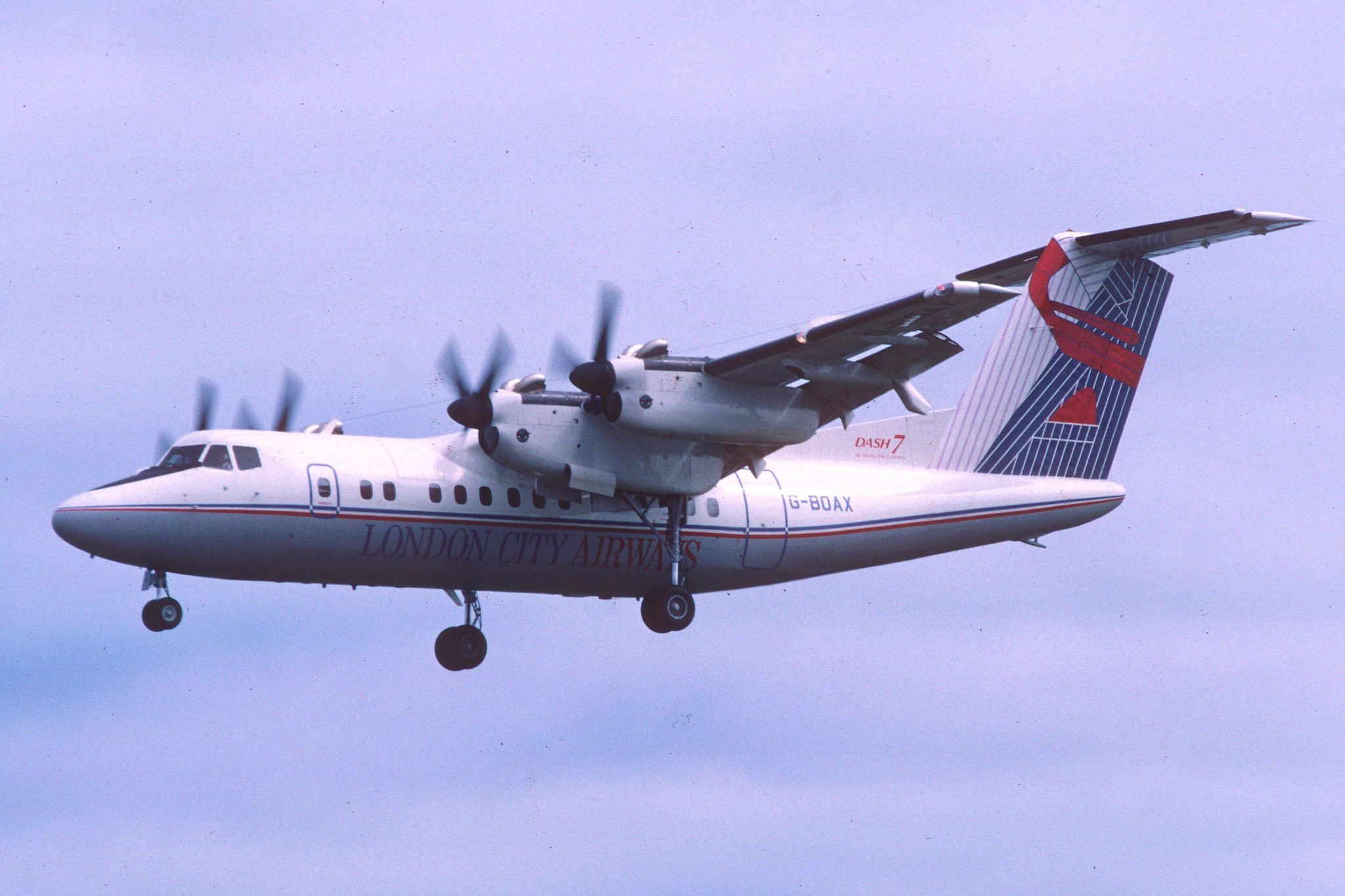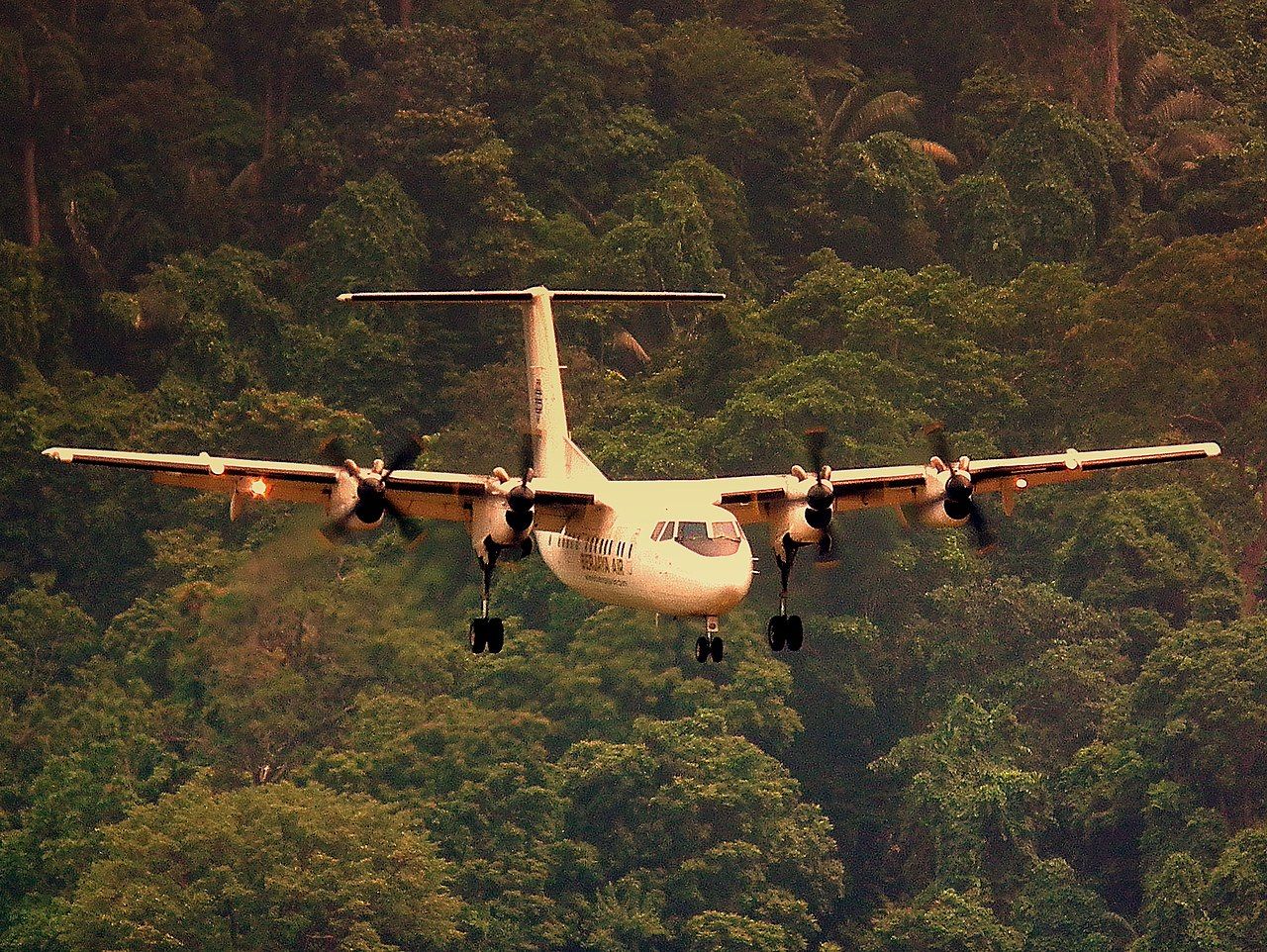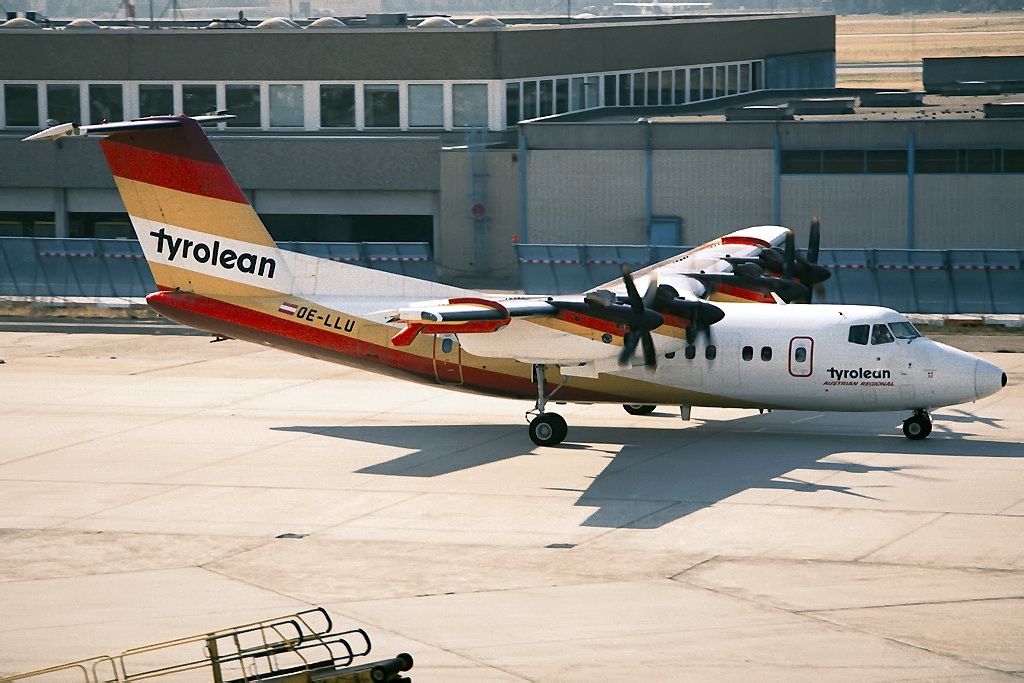February 3, 2023, marks the 45th anniversary of the de Havilland Canada DHC-7 entering service with Denver-based Rocky Mountain Airways. The airline planned to use the aircraft to transport skiers to Vail and Steamboat Springs. The runways at both airports limited what planes could operate from then, and the Dash 7 and its STOL capabilities were the perfect fit.
Already admired for their popular DHC-2 Beaver and DHC-6 Twin Otter STOL planes, the company wanted to get into the regional airliner market. While the Twin Otter was fine for small airports, if they wanted to compete with the Fokker F27 and the Hawker Siddeley 748, they needed to produce a plane that could carry more passengers.
The Dash 7 had STOL capabilities
The idea was to build a plane that could carry 40 passengers and operate out of airports with runways only 2,000 feet long. Using the Twin Otter as a guide, the Canadian plane maker set out to build a larger, four turboprop engine-powered version of its best-selling aircraft. Besides being larger than the Twin Otter and having two additional engines, the Dash 7 also had a pressurized cabin and retractable landing gear as opposed to the tricycle set up on the Twin Otter.
Development of the Dash 7 began in 1972, with the prototype aircraft taking to the skies for the first time on March 27, 1975. After entering service with Rocky Mountain Airways in 1978, operating as Continental Express, the airline found it to be the perfect aircraft for flying in and out of the state's mountain resorts.
Besides Vail and Steamboat Springs, Rocky Mountain Airlines used the Dash 7 to service the San Juan Mountains resort of Telluride. Located in Southwest Colorado, Telluride Airport (TEX) is the highest-altitude commercial airport in the United States at a height of 9,078 feet.
Maui built an airport especially for the Dash 7
Seeing the benefits the Dash 7 brought too difficult to get to locations, Kapalua Airport (JHM) on the Hawaiian island of Maui was built especially for Dash 7 operations. Scheduled passenger flights between Maui and Daniel K. Inouye International Airport (HNL) in Honolulu began on March 1, 1987.
During its production run, which was halted due to the arrival of the improved Dash 8, de Havilland Canada, and its new owner Boeing built 113 Dash 7 STOL aircraft between 1975 and 1988. The last Dash 7 manufactured was delivered to Innsbruck, Austria-based Tyrolean Airways in 1988.
Of the sales, the vast majority of aircraft were the original Dash 7-102 passenger plane and the Dash 7-103 combi version with an enlarged cargo door. These planes were followed by the 110, 111, and finally the Dash 7 -150, which featured a new interior and larger fuel capacity. There were plans to build a version of the plane with more powerful engines, but these were shelved after Boeing took control of the company.
Most commuter airlines wanted a twin-engine plane
While the Dash 7 was ideally suited to destinations with small runways, this was not a consideration for many regional carriers who used their planes as feeder aircraft delivering passengers to large airports with long runways. Another issue with the Dash 7 was that its four engines required more maintenance than twin-engine planes.
With many airlines not needing a plane with STOL capabilities and preferring one with two engines and not four, de Havilland began working on a twin-engine version of the plane called the "Dash 8."



